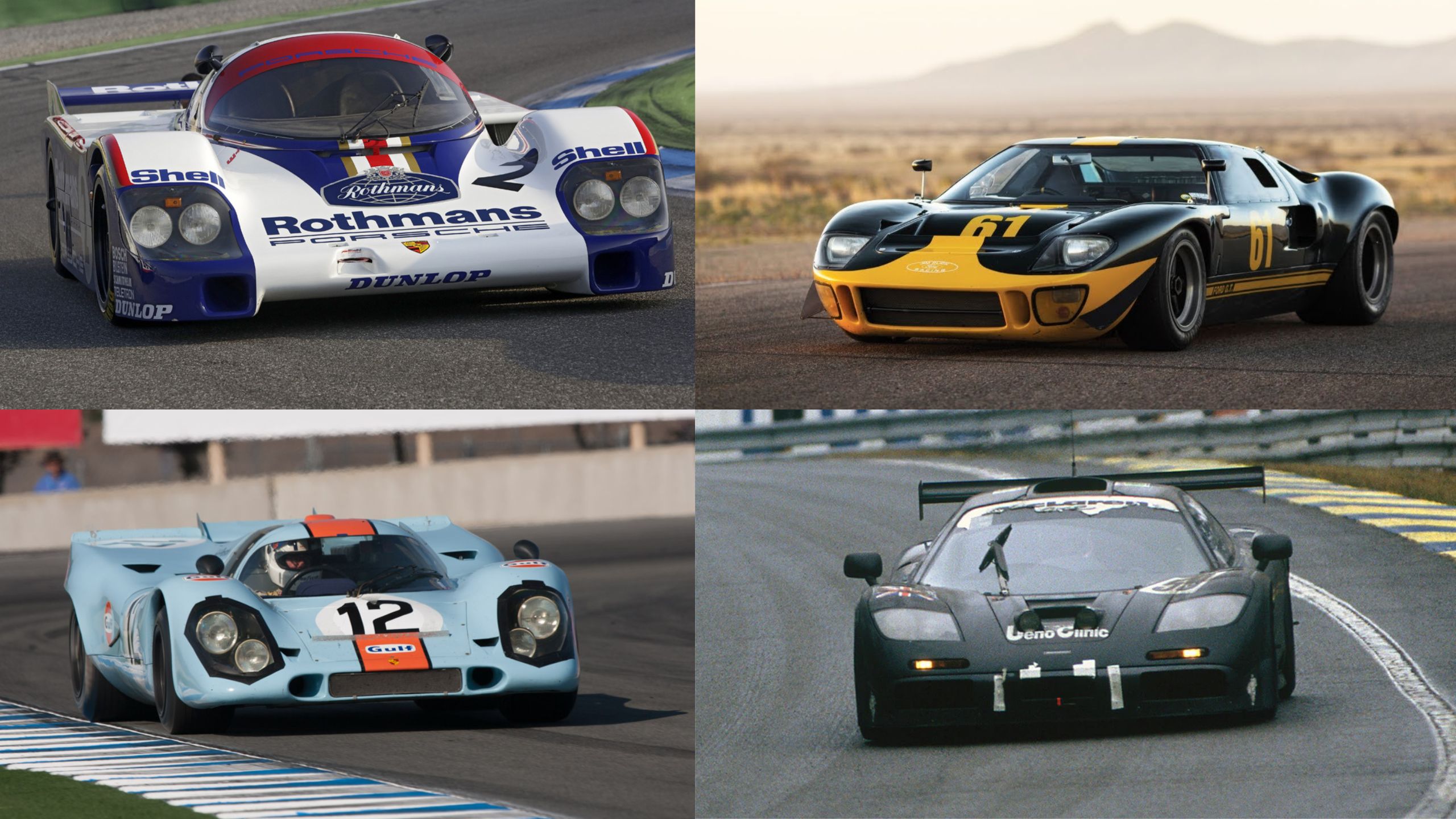The 24 Hours of Le Mans stands as the ultimate test of endurance in motorsport, challenging both man and machine to their absolute limits.
Throughout its illustrious history dating back to 1923, certain cars have risen above the rest to achieve legendary status through their dominance of this prestigious race.
These vehicles represent the pinnacle of automotive engineering, combining raw speed with the durability needed to survive 24 hours of continuous racing.
From the pioneering days of the Bentley Boys to the modern era of hybrid powertrains, these cars have not only conquered the Circuit de la Sarthe but have also driven innovation in automotive technology.
Their successes at Le Mans have influenced the development of road cars, advancing everything from aerodynamics to fuel efficiency.
This exploration look into ten extraordinary machines that didn’t just win at Le Mans they dominated it, often across multiple years, leaving an indelible mark on motorsport history.
1. Porsche 956/962 (1982-1987)
The Porsche 956, and its successor, the 962, are regarded as some of the most successful sports prototype racing cars ever created.
These cars dominated the 24 Hours of Le Mans over six consecutive years, securing victories and often occupying multiple positions in the top 10.
The success of the 956/962 platform stemmed from its revolutionary design, which combined ground-effect aerodynamics with exceptional reliability and performance.
At the heart of these machines was a 2.65-liter twin-turbocharged flat-six engine, producing around 635 horsepower.
This powerful engine allowed the 956/962 to achieve remarkable speeds on the straights of Le Mans, while the advanced aerodynamic design provided exceptional cornering capabilities.
The cars featured an aluminum monocoque chassis, making them both lightweight and rigid, which contributed to their competitive edge.
One of the key innovations of the 956/962 was its ground-effect aerodynamics.
The cars were designed with tunnel underbody venturi sections that created massive downforce, allowing for unprecedented cornering speeds while maintaining stability on high-speed straights like the Mulsanne.
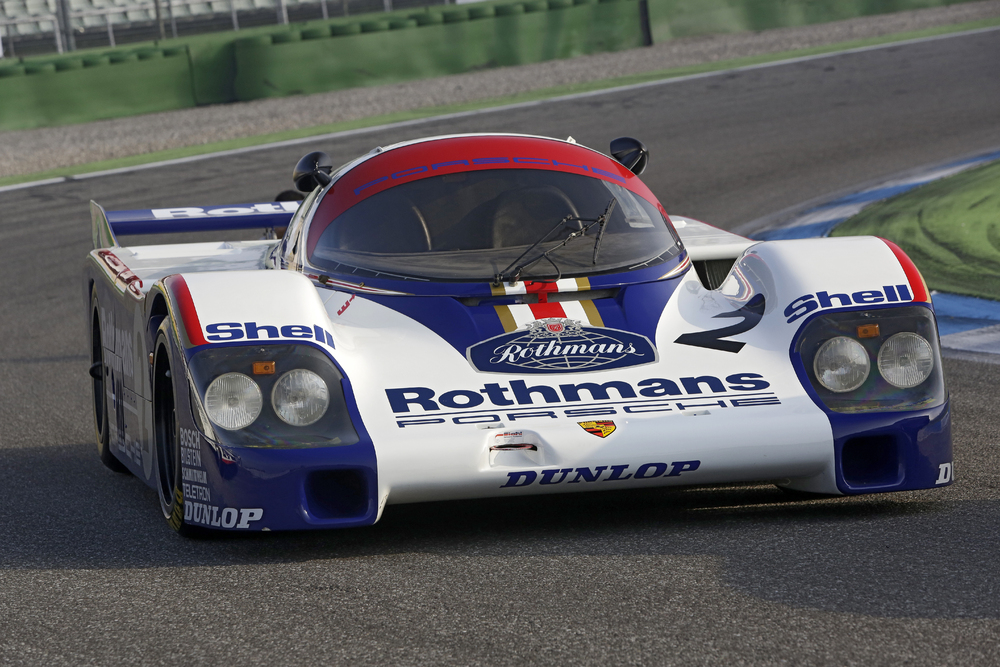
This ground-effect technology set new standards for sports prototype design and significantly influenced the future of motorsport aerodynamics.
The impact of the Porsche 956/962 extended far beyond their race victories. Their design influenced numerous road car projects, including the legendary Porsche 959 supercar.
The success of the 956/962 platform also led to widespread customer racing programs, with many private teams achieving success with these cars.
The combination of speed, reliability, and adaptability made the 956/962 the benchmark for sports prototype design for years to come.
Notable victories for the Porsche 956/962 include the 1982 Le Mans race, where the 956 secured the top three positions, and the 1983 race, where Porsche achieved a 1-2-3-4 finish.
The 962 continued this dominance, with significant wins in 1986 and 1987, further cementing its legacy as a Le Mans legend.
The Porsche 956/962’s revolutionary design, exceptional performance, and dominant success at the 24 Hours of Le Mans made it one of the most legendary sports prototype racing cars in history.
Its influence on motorsport technology and its enduring legacy in endurance racing ensure that the 956/962 remains an iconic symbol of Le Mans excellence.
2. Ford GT40 (1966-1969)
The Ford GT40 is one of the most legendary cars in the history of the 24 Hours of Le Mans, achieving an unprecedented four consecutive victories from 1966 to 1969.
This remarkable achievement not only solidified the GT40’s status as an endurance racing icon but also marked a turning point in motorsport history, ending Ferrari’s dominance at Le Mans and establishing Ford as a formidable competitor on the global stage.
The GT40 was born out of Henry Ford II’s desire to compete with Ferrari at the highest levels of motorsport.
The development of the GT40 involved key figures such as Carroll Shelby and Ken Miles, who transformed the initially troublesome car into a Le Mans winner.
The Mark II version, powered by a 7.0-liter V8 engine producing over 485 horsepower, proved particularly successful.
This powerful engine, combined with the car’s low-drag aerodynamic design and exceptional stability at high speeds, made the GT40 perfectly suited to the long straights of Le Mans.
In the 1966 edition of the 24 Hours of Le Mans, the Ford GT40 achieved its first victory, with the team of Bruce McLaren and Chris Amon taking the checkered flag.
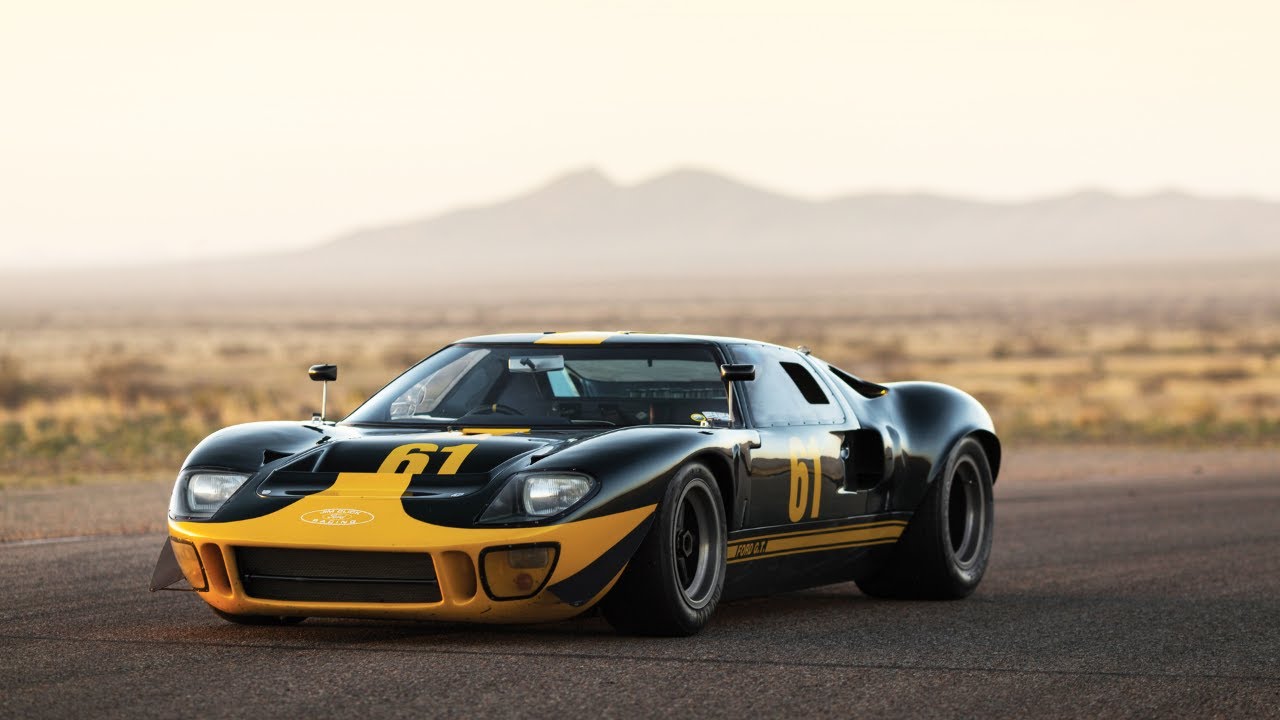
This historic win marked the beginning of Ford’s dominance at Le Mans, as the GT40 continued to outperform its rivals in subsequent years.
The following year, the GT40 secured its second victory, with Dan Gurney and A.J. Foyt at the helm, making history as the first all-American team to win Le Mans.
The GT40’s success continued in 1968 and 1969, with the car securing two more victories.
In 1968, Pedro Rodríguez and Lucien Bianchi drove the GT40 to victory, while in 1969, Jacky Ickx and Jackie Oliver claimed the win in a dramatic finish.
The 1969 race is particularly memorable for Ickx’s Le Mans-style start, where he walked to his car instead of running, and later overtook his competitors to win the race by a narrow margin.
The Ford GT40’s dominance at Le Mans had a profound impact on motorsport, showcasing the potential of American engineering and innovation.
The car’s success also inspired the development of future high-performance vehicles, both on and off the track.
The GT40’s legacy continues to be celebrated by car enthusiasts and collectors, and it remains one of the most iconic and valuable cars in automotive history.
The Ford GT40’s combination of powerful performance, engineering excellence, and historic victories made it a legend at the 24 Hours of Le Mans.
Its four consecutive wins from 1966 to 1969 are a testament to Ford’s commitment to excellence and innovation in endurance racing.
3. Audi R8 LMP900/LMP1 (2000-2005)
The Audi R8 prototype revolutionized endurance racing through its combination of speed, reliability, and innovative design.
Winning the 24 Hours of Le Mans five times between 2000 and 2005, the R8 established Audi as a dominant force in endurance racing and pioneered technologies that would influence future race cars and road vehicles.
At the heart of the R8’s success was its 3.6-liter twin-turbocharged V8 engine, producing around 610 horsepower.
This powerful engine provided the R8 with exceptional speed and performance, allowing it to compete at the highest levels of endurance racing.
One of the most innovative features of the R8 was its modular design, which allowed for quick replacement of major components during the race, including the entire rear end.
This approach minimized downtime and ensured that the car could continue running efficiently even after encountering mechanical issues.
The R8’s success was also attributed to Audi’s FSI (Fuel Stratified Injection) direct fuel injection technology, which provided both performance and efficiency.
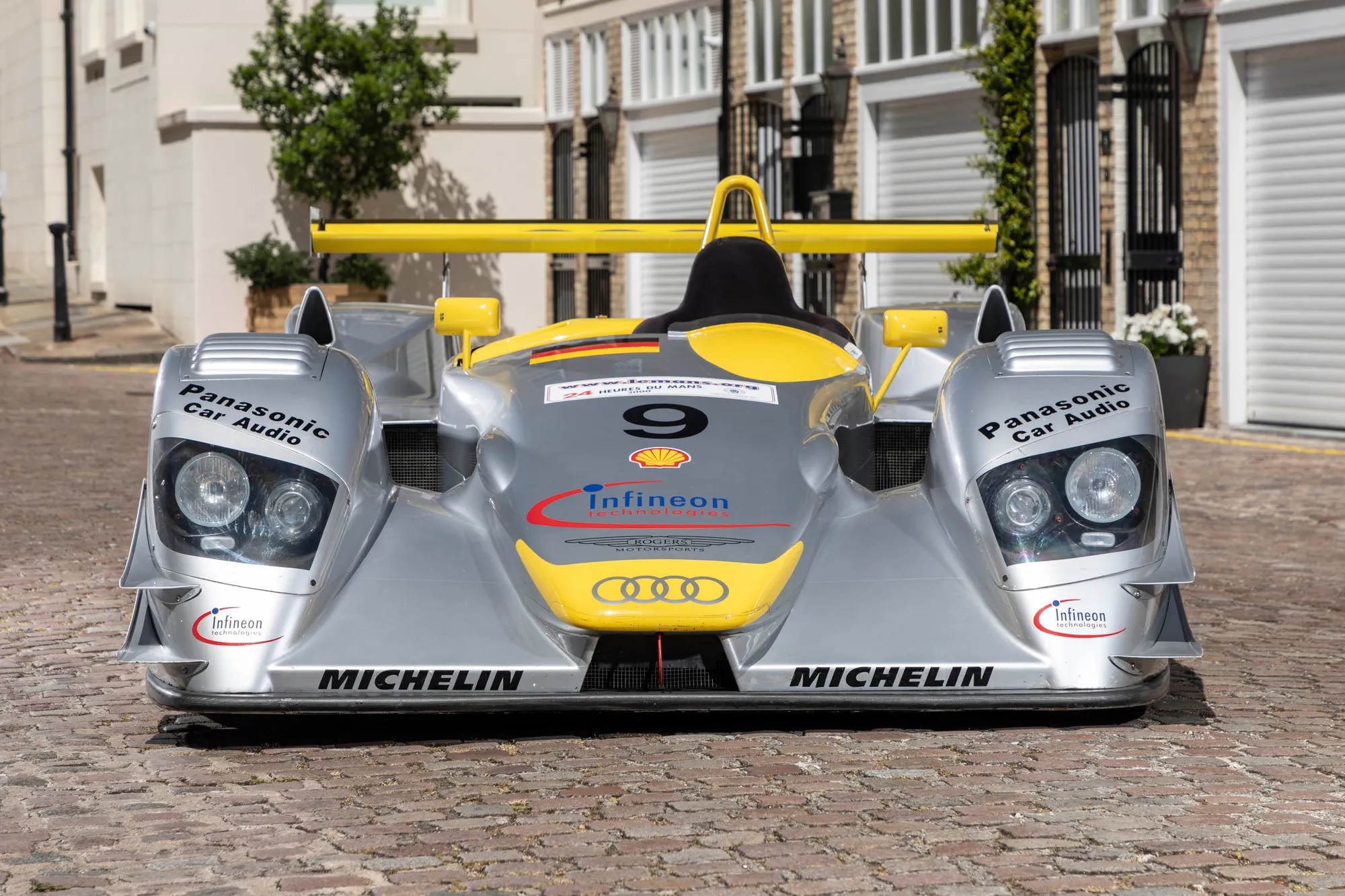
This technology allowed the R8 to achieve better fuel economy without sacrificing power, giving it a strategic advantage in endurance racing.
The influence of the Audi R8 on motorsport technology cannot be overstated. Its success with FSI technology led to widespread adoption in road cars, while its modular design approach influenced the development of future race cars.
The R8’s dominant performances helped establish Audi’s reputation for endurance racing excellence, paving the way for their later successes with diesel and hybrid technology.
Notable victories for the Audi R8 include the 2000 Le Mans race, where the car secured its first win, and the 2001 race, where it achieved a 1-2-3 finish.
The R8 continued its dominance with wins in 2002, 2004, and 2005, further solidifying its legacy as a Le Mans legend.
The Audi R8 LMP900/LMP1’s combination of innovative design, exceptional performance, and dominant success at the 24 Hours of Le Mans made it one of the most legendary sports prototype racing cars in history.
Its influence on motorsport technology and its enduring legacy in endurance racing ensure that the R8 remains an iconic symbol of Le Mans excellence.
4. Ferrari 250 (1960-1965)
The Ferrari 250 series, particularly the 250 GTO and 250 LM, dominated their respective classes at the 24 Hours of Le Mans during the early 1960s, representing the peak of Ferrari’s golden age in endurance racing.
These cars combined beautiful design with exceptional performance, establishing standards for both race cars and road-going GT vehicles.
The 250 series was powered by Ferrari’s legendary 3.0-liter Colombo V12 engine, producing between 300 and 320 horsepower depending on the specification.
This high-revving engine was known for its smooth power delivery and reliability, making it a key factor in the cars’ success.
The 250 GTO, in particular, represented the ultimate development of the front-engine GT race car, with its lightweight aluminum bodywork, sophisticated suspension systems, and aerodynamic design.
In the 1962 edition of the 24 Hours of Le Mans, the Ferrari 250 GTO achieved its first class victory, with drivers Pierre Noblet and Jean Guichet at the helm.
This success continued in subsequent years, with the 250 GTO and 250 LM securing multiple class wins and victories.
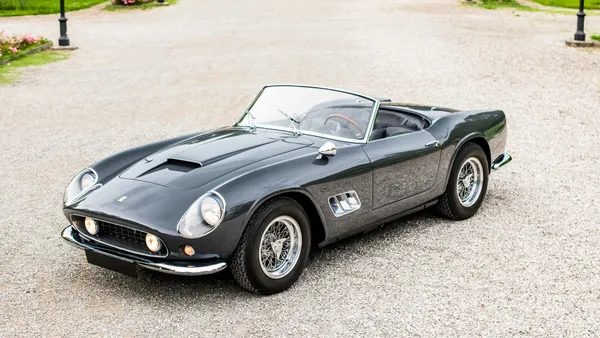
In 1965, the 250 LM, driven by Jochen Rindt and Masten Gregory, secured the victory at Le Mans, marking a significant achievement for Ferrari and solidifying the 250 series’ legacy.
Beyond their racing success, these cars helped establish Ferrari’s reputation for building exceptional road-going sports cars.
The 250 series’ combination of performance, beauty, and racing pedigree has made them among the most valuable collector cars, with 250 GTOs regularly setting price records at auctions.
The impact of the Ferrari 250 series extends beyond the racing world, influencing the design and development of future high-performance vehicles.
The cars’ success at Le Mans and their enduring legacy in motorsport history ensure that the 250 series remains an iconic symbol of Ferrari’s engineering excellence and competitive spirit.
The Ferrari 250 series’ combination of exceptional performance, beautiful design, and racing success made it a legend at the 24 Hours of Le Mans.
Its victories during the early 1960s are a testament to Ferrari’s dominance in endurance racing and its commitment to building iconic sports cars.
Also Read: 10 Cars That Are Loaded With Features You Didn’t Know Existed
5. Bentley Speed Six (1929-1930)
The Bentley Speed Six is one of the most iconic cars in the history of the 24 Hours of Le Mans, achieving back-to-back victories in 1929 and 1930.
This legendary car was a testament to the engineering prowess of Bentley and the driving skill of the Bentley Boys, a group of wealthy British drivers who dominated endurance racing during this era.
The Speed Six was powered by a robust 6.5-liter inline-six engine, producing around 200 horsepower.
This engine’s reliability and performance were key factors in the car’s success at Le Mans.
The Speed Six featured a sturdy chassis and advanced suspension system, allowing it to handle the demanding conditions of the 24-hour race with ease.
In the 1929 edition of the race, Bentley entered three Speed Six cars, with the team of Woolf Barnato and Henry Birkin taking the victory.
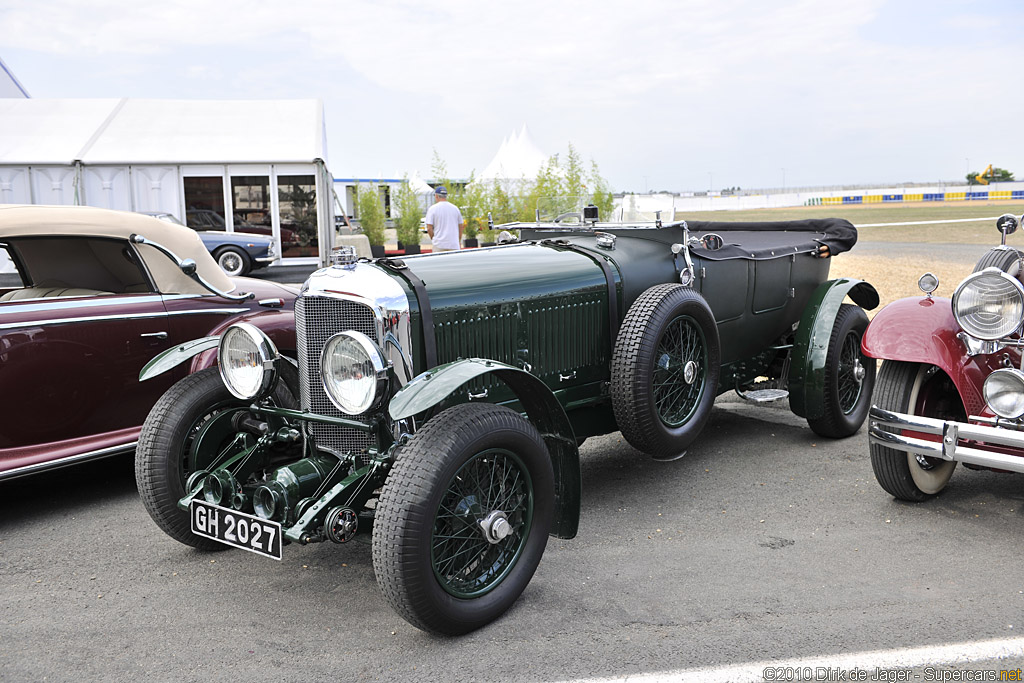
The Speed Six demonstrated its superiority by leading the race for the majority of the 24 hours, showcasing both its speed and endurance.
The following year, Barnato returned to defend his title, this time partnered with Glen Kidston.
Once again, the Speed Six proved to be unbeatable, securing its second consecutive victory at Le Mans.
The success of the Bentley Speed Six at Le Mans solidified the brand’s reputation for building high-performance and reliable endurance racing cars.
The car’s dominance during this period also contributed to Bentley’s legacy as a symbol of British engineering excellence.
The Speed Six’s victories at Le Mans remain a proud moment in Bentley’s storied history, and the car itself continues to be celebrated as one of the greatest endurance racing machines of all time.
The Bentley Speed Six’s combination of robust engineering, reliable performance, and racing success made it a legend at the 24 Hours of Le Mans.
Its back to back victories in 1929 and 1930 are a testament to Bentley’s commitment to excellence and innovation in endurance racing.
6. Porsche 917 (1970-1971)
The Porsche 917 is one of the most iconic and successful cars in the history of the 24 Hours of Le Mans, achieving back-to-back victories in 1970 and 1971.
The 917’s remarkable performance and engineering excellence not only solidified Porsche’s reputation in endurance racing but also left an indelible mark on motorsport history.
The car’s combination of raw power, advanced aerodynamics, and innovative design made it a dominant force on the track.
The Porsche 917 was powered by a 4.5-liter flat-12 engine, producing around 580 horsepower.
This engine’s incredible power output, combined with the car’s lightweight construction and advanced aerodynamics, allowed the 917 to reach top speeds of over 220 mph on the Mulsanne Straight at Le Mans.
The car’s distinctive long-tail design, known as the “Langheck,” further improved its aerodynamic efficiency, enhancing stability and speed.
The 917’s success at Le Mans was a culmination of Porsche’s relentless pursuit of engineering excellence.
The car underwent rigorous development and testing to ensure it could withstand the grueling demands of endurance racing.
Its spaceframe chassis provided a strong yet lightweight structure, while its innovative aerodynamic features reduced drag and increased downforce, allowing for exceptional handling and stability at high speeds.
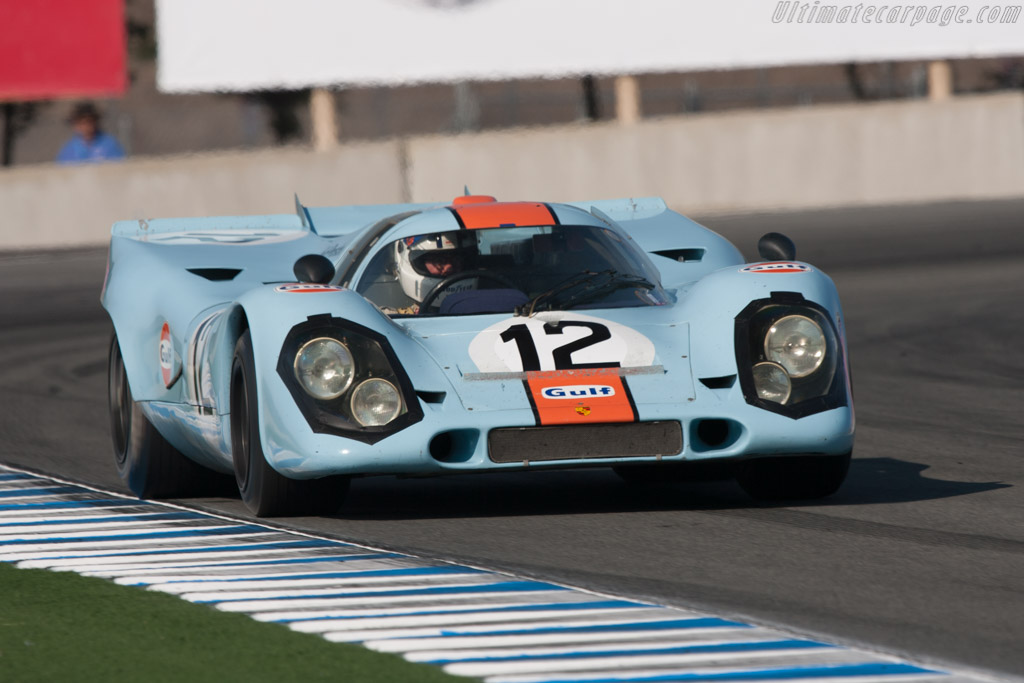
In the 1970 edition of the 24 Hours of Le Mans, the Porsche 917 secured its first victory, with drivers Hans Herrmann and Richard Attwood at the helm.
This historic win marked a turning point for Porsche, as the 917 demonstrated its superiority over its competitors.
The following year, the 917 repeated its success, with the team of Helmut Marko and Gijs van Lennep taking the checkered flag.
The impact of the Porsche 917 extended far beyond its racing achievements. The car’s success at Le Mans helped establish Porsche as a dominant force in international motorsport and influenced race car design for years to come.
The 917’s iconic status has been further enhanced by its role in the film “Le Mans,” starring Steve McQueen, and its continued popularity among collectors and enthusiasts.
The Porsche 917’s combination of raw power, advanced aerodynamics, and engineering excellence made it a legend at the 24 Hours of Le Mans.
Its back-to-back victories in 1970 and 1971 are a testament to Porsche’s commitment to innovation and performance in endurance racing.
7. Jaguar D-Type (1955-1957)
The Jaguar D-Type’s three consecutive victories at the 24 Hours of Le Mans from 1955 to 1957 represent the peak of British racing success in the 1950s.
The car’s innovative monocoque construction, aerodynamic design, and powerful engine set new standards for racing car engineering, making it one of the most iconic and successful cars in Le Mans history.
The Jaguar D-Type was powered by a 3.4-liter straight-six engine, producing around 250 horsepower.
This engine, combined with the car’s lightweight construction and advanced aerodynamics, provided exceptional performance on the track.
The D-Type’s monocoque chassis construction was revolutionary for its time, providing both strength and lightweight, which contributed to the car’s agility and speed.
One of the most distinctive features of the D-Type was its aerodynamic design, which included a vertical fin behind the driver’s headrest.
This fin improved stability at high speeds, particularly on the long straights of Le Mans.
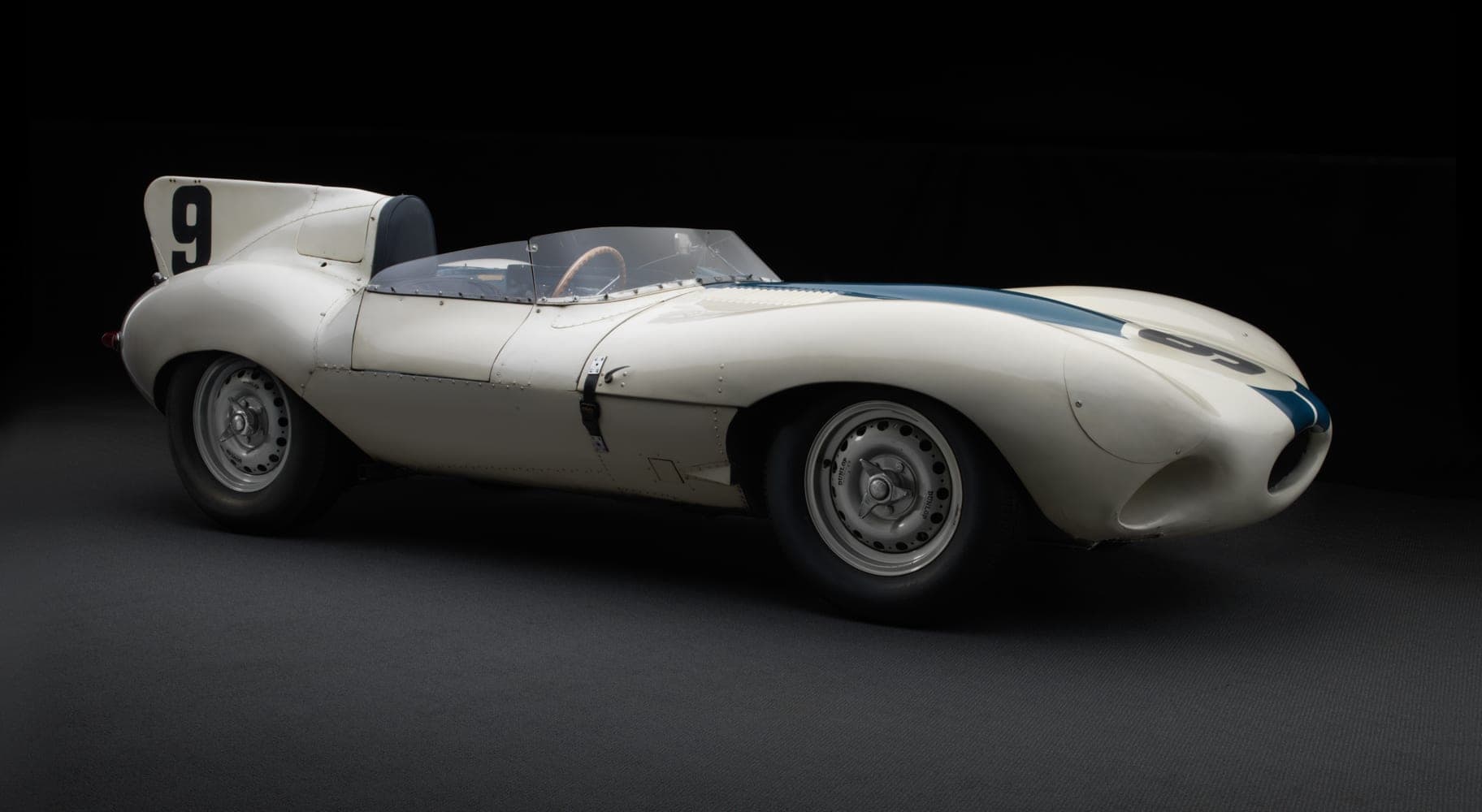
The car’s aerodynamic efficiency allowed it to reach impressive top speeds, while its advanced suspension system provided excellent handling and road-holding capabilities.
In the 1955 edition of the 24 Hours of Le Mans, the Jaguar D-Type achieved its first victory, with drivers Mike Hawthorn and Ivor Bueb at the helm.
This success was followed by consecutive victories in 1956 and 1957, with the D-Type demonstrating its dominance on the Le Mans circuit.
The car’s three consecutive wins solidified its status as a Le Mans legend and established Jaguar as a leading manufacturer of high-performance racing cars.
The D-Type’s success at Le Mans influenced both racing car design and Jaguar’s road car development.
The car’s technological innovations, particularly in chassis construction and aerodynamics, helped establish new standards for high-performance vehicle design.
The D-Type’s legacy lives on in Jaguar’s continued emphasis on combining performance with advanced engineering.
The Jaguar D-Type’s combination of innovative design, exceptional performance, and consecutive victories at the 24 Hours of Le Mans made it one of the most legendary racing cars in history.
Its impact on motorsport and the automotive industry ensures that the D-Type remains an enduring icon of racing excellence.
8. McLaren F1 GTR (1995)
The McLaren F1 GTR’s victory at the 24 Hours of Le Mans in 1995 represents a remarkable achievement for a car that was essentially a modified road vehicle.
Despite facing purpose-built prototypes, the F1 GTR’s combination of exceptional design, reliability, and performance secured a victory in challenging conditions, solidifying its status as a legendary racing car.
The McLaren F1 GTR was powered by a BMW-developed 6.1-liter V12 engine, producing around 600 horsepower in race trim.
This powerful engine, combined with the car’s lightweight carbon fiber construction and aerodynamic modifications, provided exceptional performance on the track.
The central driving position, unique among Le Mans competitors, offered optimal visibility and weight distribution, further enhancing the car’s handling and stability.
The success of the McLaren F1 GTR at Le Mans was a testament to its engineering excellence and the skill of its drivers.
The car’s reliability and performance were crucial factors in its victory, as it endured the grueling 24-hour race while maintaining competitive lap times.
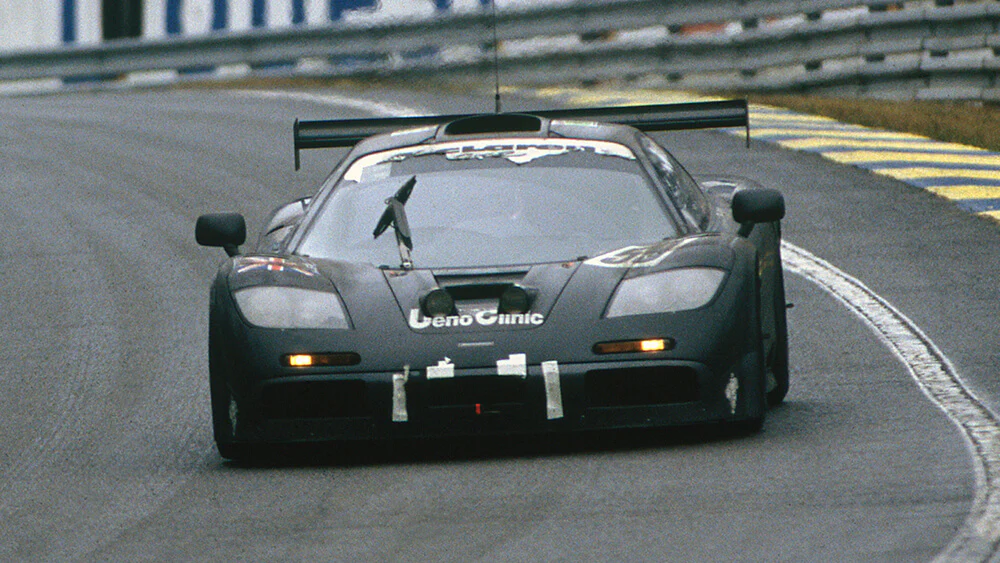
The 1995 race saw the F1 GTR driven to victory by the team of JJ Lehto, Yannick Dalmas, and Masanori Sekiya, who showcased the car’s potential and solidified its place in Le Mans history.
The F1 GTR’s victory at Le Mans had a significant impact on the motorsport and high-performance road cars.
The success of a road-based car against purpose-built prototypes demonstrated the potential of properly developed road car technology in endurance racing.
This achievement influenced the design and development of future GT racing cars and solidified McLaren’s reputation as a manufacturer of high-performance vehicles.
The legacy of the McLaren F1 GTR extends beyond its racing success. The car’s innovative design and engineering excellence have made it one of the most iconic and valuable cars in automotive history.
The F1 GTR continues to be celebrated by car enthusiasts and collectors, and its victory at Le Mans remains a proud moment in McLaren’s storied history.
The McLaren F1 GTR’s combination of exceptional design, reliability, and performance made it a legend at the 24 Hours of Le Mans.
Its victory in 1995 is a testament to McLaren’s commitment to engineering excellence and innovation in endurance racing.
9. Toyota GR010 HYBRID (2021-Present)
The Toyota GR010 HYBRID represents the modern era of Le Mans dominance, combining advanced hybrid technology with traditional racing car design principles.
The car’s success at the 24 Hours of Le Mans demonstrates Toyota’s mastery of complex hybrid powertrains and their commitment to excellence in endurance racing.
The GR010 features a 3.5-liter V6 twin-turbo engine combined with an electric motor-generator unit, producing a combined output of 670 horsepower.
This hybrid powertrain provides both exceptional performance and efficiency, allowing the GR010 to compete at the highest levels of endurance racing.
The car’s sophisticated energy recovery systems and power management electronics represent the cutting edge of racing technology.
One of the key factors behind the GR010’s success is its aerodynamic design, which balances the need for downforce with efficiency requirements imposed by regulations.
The car’s advanced aerodynamics provide exceptional stability and handling, while its lightweight construction ensures competitive performance on the track.
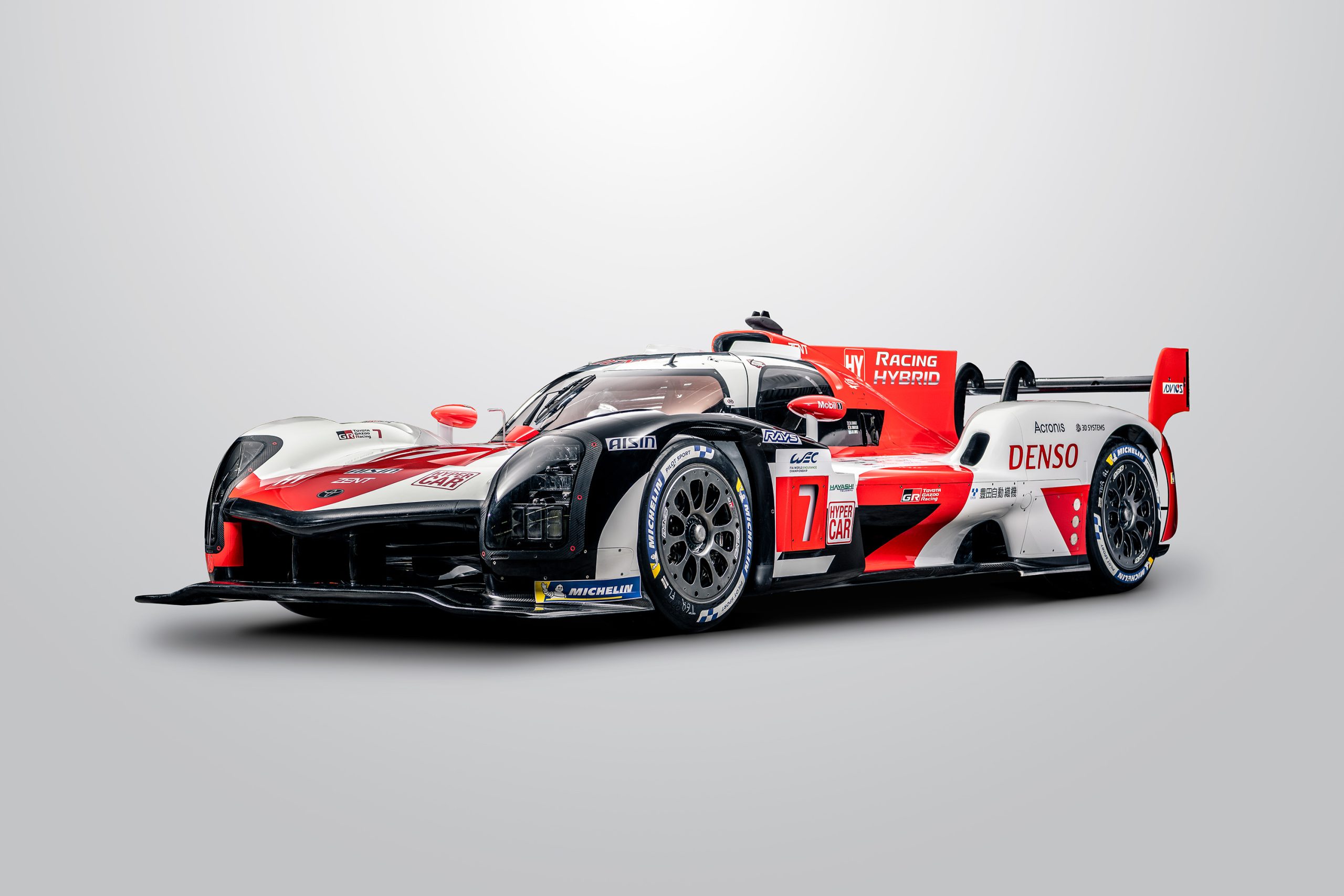
The GR010’s design incorporates lessons learned from previous Toyota prototypes, resulting in a finely tuned machine capable of excelling in the grueling conditions of Le Mans.
The Toyota GR010 HYBRID made its debut in the 2021 season and quickly established itself as a dominant force in the FIA World Endurance Championship (WEC).
At the 24 Hours of Le Mans in 2021, the GR010 secured its first victory, with drivers Mike Conway, Kamui Kobayashi, and José María López at the helm.
The car’s performance throughout the race was marked by its reliability, speed, and efficiency, allowing it to outlast and outperform its competitors.
The success of the GR010 HYBRID continued in 2022, with the car securing another victory at Le Mans.
The team of Sébastien Buemi, Brendon Hartley, and Ryo Hirakawa delivered an outstanding performance, showcasing the car’s capabilities and solidifying Toyota’s reputation as a leader in hybrid endurance racing technology.
The impact of the Toyota GR010 HYBRID extends beyond its racing achievements.
The car’s advanced hybrid technology and aerodynamic innovations influence the development of Toyota’s future road vehicles, demonstrating the potential of hybrid powertrains in high-performance applications.
The GR010’s success at Le Mans and its continued dominance in endurance racing highlight Toyota’s commitment to pushing the boundaries of automotive engineering and sustainability.
The Toyota GR010 HYBRID’s combination of advanced hybrid technology, exceptional performance, and racing success makes it a legend at the 24 Hours of Le Mans.
Its victories in 2021 and 2022 are a testament to Toyota’s mastery of hybrid powertrains and its dedication to excellence in endurance racing.
10. Audi R18 e-tron quattro (2012-2016)
The Audi R18 e-tron quattro revolutionized endurance racing by successfully combining diesel and hybrid power.
This groundbreaking car achieved multiple victories at the 24 Hours of Le Mans, demonstrating the potential of alternative powertrains in high-performance motorsport applications and solidifying Audi’s reputation as a leader in endurance racing technology.
The Audi R18 e-tron quattro featured a 3.7-liter V6 TDI diesel engine paired with an electric motor-generator unit that powered the front axle, creating an innovative all wheel drive system.
This hybrid powertrain produced a combined output of around 700 horsepower, providing both exceptional performance and efficiency.
The car’s sophisticated energy recovery systems, including a flywheel accumulator, allowed it to store and deploy electric power strategically, enhancing its competitiveness on the track.
One of the key factors behind the R18 e-tron Quattro’s success was its ultra-efficient aerodynamics.
The car’s design focused on reducing drag while maximizing downforce, resulting in exceptional stability and handling at high speeds.
The R18’s carbon fiber monocoque chassis incorporated advanced crash structures and safety features, ensuring that the car could withstand the demands of endurance racing while keeping its drivers safe.
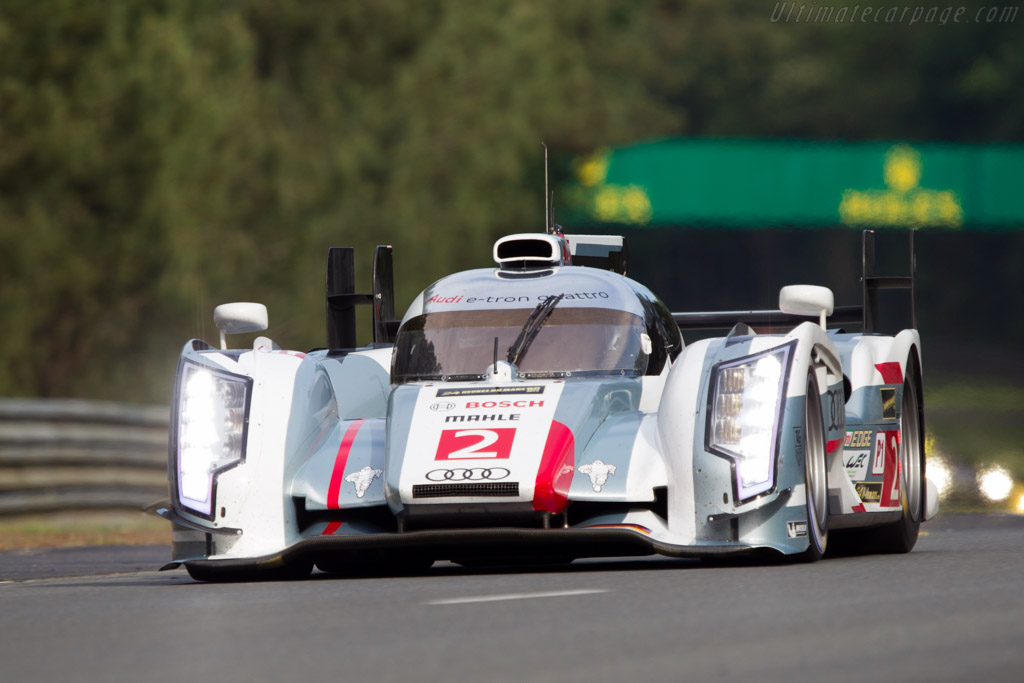
The Audi R18 e-tron quattro made its debut in the 2012 season and quickly established itself as a dominant force in the FIA World Endurance Championship (WEC).
At the 24 Hours of Le Mans in 2012, the R18 secured its first victory, with drivers Marcel Fässler, André Lotterer, and Benoît Tréluyer at the helm.
This historic win marked the first time a hybrid vehicle had won Le Mans, showcasing the potential of hybrid technology in endurance racing.
The success of the R18 e-tron quattro continued in subsequent years, with the car securing additional victories at Le Mans in 2013 and 2014.
The R18’s performance throughout these races was characterized by its reliability, speed, and efficiency, allowing it to consistently outperform its competitors.
The impact of the Audi R18 e-tron quattro extends beyond its racing achievements.
The car’s success with hybrid technology influenced the development of future race cars and road vehicles, demonstrating the potential of alternative powertrains in high-performance applications.
The R18’s dominance at Le Mans and its continued influence on automotive engineering highlight Audi’s commitment to innovation and sustainability in motorsport.
The Audi R18 e-tron quattro’s combination of advanced hybrid and diesel technology, exceptional performance, and multiple victories at the 24 Hours of Le Mans makes it a legend in endurance racing.
Its successes from 2012 to 2014 are a testament to Audi’s pioneering spirit and dedication to pushing the boundaries of automotive engineering.
Also Read: 12 Cars With the Most Innovative Tech for Drivers

